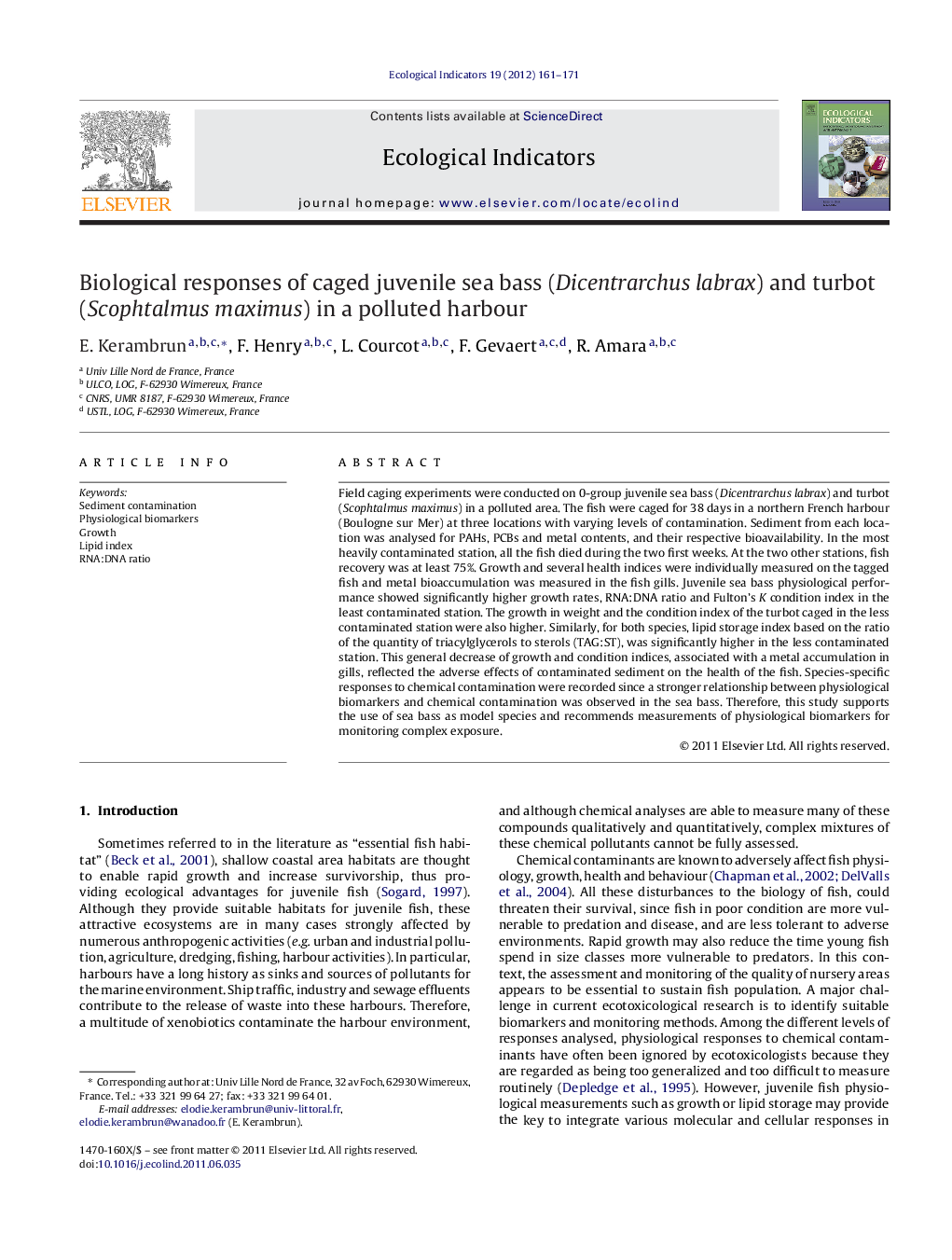| کد مقاله | کد نشریه | سال انتشار | مقاله انگلیسی | نسخه تمام متن |
|---|---|---|---|---|
| 4373722 | 1617181 | 2012 | 11 صفحه PDF | دانلود رایگان |

Field caging experiments were conducted on 0-group juvenile sea bass (Dicentrarchus labrax) and turbot (Scophtalmus maximus) in a polluted area. The fish were caged for 38 days in a northern French harbour (Boulogne sur Mer) at three locations with varying levels of contamination. Sediment from each location was analysed for PAHs, PCBs and metal contents, and their respective bioavailability. In the most heavily contaminated station, all the fish died during the two first weeks. At the two other stations, fish recovery was at least 75%. Growth and several health indices were individually measured on the tagged fish and metal bioaccumulation was measured in the fish gills. Juvenile sea bass physiological performance showed significantly higher growth rates, RNA:DNA ratio and Fulton's K condition index in the least contaminated station. The growth in weight and the condition index of the turbot caged in the less contaminated station were also higher. Similarly, for both species, lipid storage index based on the ratio of the quantity of triacylglycerols to sterols (TAG:ST), was significantly higher in the less contaminated station. This general decrease of growth and condition indices, associated with a metal accumulation in gills, reflected the adverse effects of contaminated sediment on the health of the fish. Species-specific responses to chemical contamination were recorded since a stronger relationship between physiological biomarkers and chemical contamination was observed in the sea bass. Therefore, this study supports the use of sea bass as model species and recommends measurements of physiological biomarkers for monitoring complex exposure.
Journal: Ecological Indicators - Volume 19, August 2012, Pages 161–171